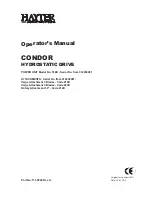
20
Step 2 (the successful case)
Press both the range buttons,
UP and DOWN
again at the same time. The current
configuration will be saved and the LCD display content will change, and it must
look like Figure 26, for 3 seconds.
Step 2’ (automatic step performed)
There are 2 ways to get this situation.
The first way is to have a successful saving.
The 2
nd
is to press the other button, combinations of buttons or turning knobs. The
saving of configuration is abandoned.
Either way, the LCD display must look like figure 27.
3.2.5.5 Waveform examples
This section will have examples of the outputted waveforms: sine, square, triangle for different duty cycle values.
Attention: The true meaning of duty cycle applies only for the square wave. By turning the DUTY CYCLE knob, the
symmetry of the waveform can change for sine wave and triangle wave. Therefore distorted wave shapes will
be obtained for the sine wave and ramp waves will be obtained for the triangle.
Sine wave type signals
Example of asymmetric sine wave, duty cycle set to 0%.
Configuration
saved
FREQUENCY
RANGE (Hz)
LEVEL
Peak-to-Peak
(into 50
Ω
)
Figure 26: LCD example of displaying the success of
saving current configuration
2.2222KHz
10K
1.01 V Output
FREQUENCY
RANGE (Hz)
LEVEL
Peak-to-Peak
(into 50
Ω
)
Figure 27: LCD example of displaying after a
configuration saving
















































